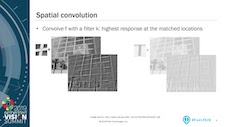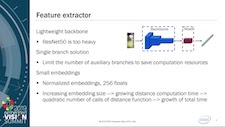| LETTER FROM THE EDITOR |
Dear Colleague,
The Vision Tank is the Edge AI and Vision Alliance’s annual start-up competition, showcasing the best new ventures using computer vision or visual AI in their products and services. It’s open to early-stage companies, and entrants are judged on four criteria: technology innovation, business plan, team and business opportunity. Get to know the 12 semi-finalists in this year’s competition, who are solving some of the world’s most complex problems, by watching their pitch videos. Our panel of judges will narrow this field down to five finalists, to be announced this Friday, May 15th. And on July 16th at 9 am Pacific Time, join us online for free as the finalists pitch their companies and products, competing to win the Judges’ Choice and (after you cast your vote online) Audience Choice awards! We’ve got big news about the Embedded Vision Summit! Originally scheduled to take place in person later this month in California, the 2020 Embedded Vision Summit is moving to a fully online experience. The event will be made up of four sessions taking place Tuesdays and Thursdays from September 15 through September 24, from 9 am to 2 pm Pacific Time. The Summit remains the premier conference and exhibition for innovators adding computer vision and AI to products. Hear from and interact with over 100 expert speakers and industry leaders on the latest in practical computer vision and edge AI technology—including processors, tools, techniques, algorithms and applications—in both live and on-demand sessions. And see cool demos of the latest building-block technologies from dozens of exhibitors! Attending the Summit is the perfect way to bring your next vision- or AI-based product to life. Are you ready to gain valuable insights and make important connections? Be sure to register today with promo code SUPEREBNL20-V to receive your Super Early Bird Discount! Also, the Edge AI and Vision Alliance has partnered with OpenCV.Org to allow you to take any of their on-line trainings at a 20% discount. These classes include Computer Vision I (Introduction to OpenCV in both C++ and Python) and II (Applications in OpenCV, both C++ and Python) with OpenCV, as well as Deep Learning with PyTorch. The latter includes 100 hours of free GPU time on Microsoft Azure. Visit https://opencv.org/courses/ to learn more and use discount code ALLIANCE-20 to claim your savings! Brian Dipert |
| RESOURCE-EFFICIENT NEURAL NETWORKS |
|
Separable Convolutions for Efficient Implementation of CNNs and Other Vision Algorithms Fast and Accurate RMNet: A New Neural Network for Embedded Vision |
| EDGE, CLOUD AND HYBRID IMPLEMENTATIONS |
|
Creating Efficient, Flexible and Scalable Cloud Computer Vision Applications: An Introduction Edge/Cloud Tradeoffs and Scaling a Consumer Computer Vision Product |
| FEATURED NEWS |
|
OmniVision Launches Automotive SoC for Entry-Level Rearview Cameras With Low-Light Performance, Low Power and Small Size MediaTek Unveils 5G-Integrated Dimensity 1000+ Chip for Smartphones AImotive’s ISO26262-certified Simulator Powers Continuous Integration and Delivery of Automated Driving Imagination Showcases Safety-critical GPU Software Driver Arm Offers Silicon Startups Zero-cost Entry Access to Its IP and Tools For Chip Designs |






